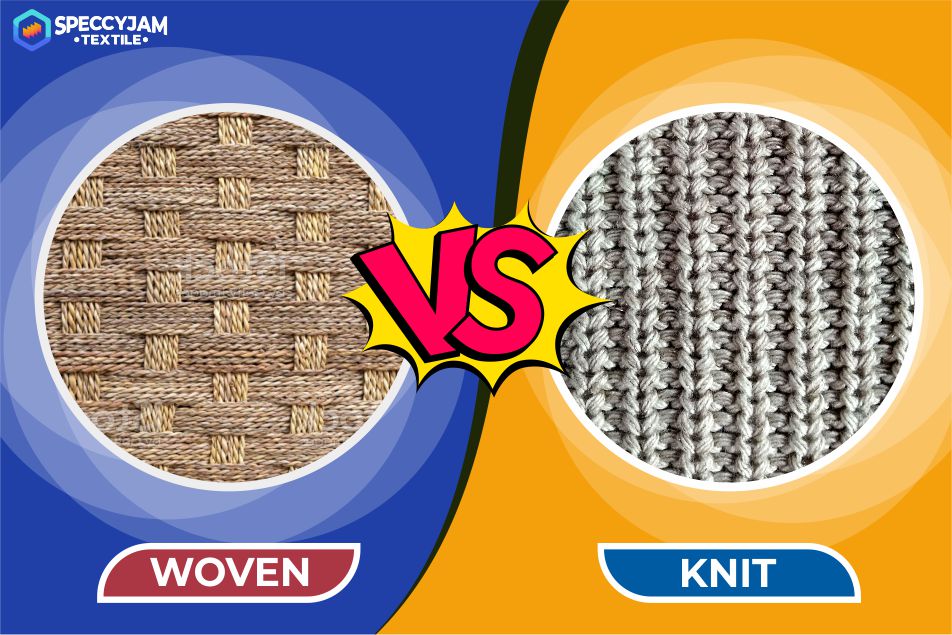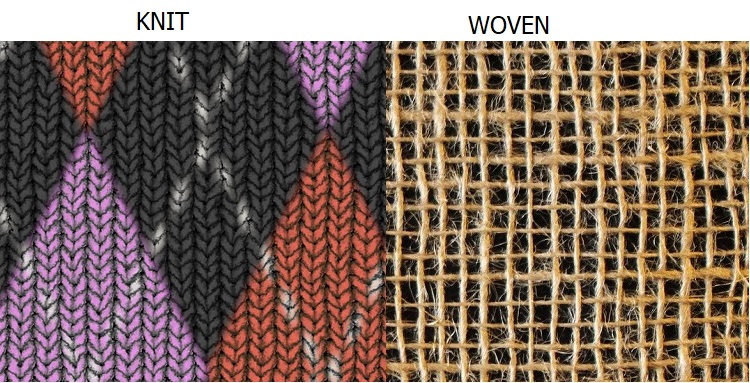Content Menu
● Understanding Fabric Construction
● Knitted Fabrics in Swimwear
>> Advantages of Knitted Fabrics for Swimwear
>> Disadvantages of Knitted Fabrics for Swimwear
● Woven Fabrics in Swimwear
>> Advantages of Woven Fabrics for Swimwear
>> Disadvantages of Woven Fabrics for Swimwear
● Hybrid Approaches in Swimwear Design
● Innovations in Swimwear Fabrics
● Choosing the Right Fabric for Your Swimwear
● Conclusion
● Frequently Asked Questions About Knitted and Woven Fabrics in Swimwear
>> Q: Are all swimsuits made from knitted fabrics?
>> Q: Do knitted swimwear fabrics last as long as woven ones?
>> Q: Can woven fabrics be used for competitive swimwear?
>> Q: How do I care for my knitted swimwear to make it last longer?
>> Q: Are there any advantages to choosing swimwear with both knitted and woven fabrics?
When it comes to choosing the perfect swimwear, understanding the fabric is crucial. Two main types of fabrics dominate the swimwear industry: knitted and woven fabrics. Each has its unique characteristics, advantages, and disadvantages, making them suitable for different styles and preferences in swimwear. In this comprehensive guide, we'll dive deep into the world of swimwear fabrics, exploring the differences between knitted and woven materials, their properties, and how they affect your swimming experience.
Understanding Fabric Construction
Before we delve into the specifics of swimwear, it's essential to understand the fundamental differences between knitted and woven fabrics.
1. Knitted Fabrics: Knitted fabrics are created by interlocking loops of yarn. This construction method results in a stretchy, flexible material that can easily conform to the body's shape. Imagine a sweater or a t-shirt – these are typically made from knitted fabrics.
2. Woven Fabrics: Woven fabrics, on the other hand, are made by interlacing two sets of yarns at right angles. This creates a more stable, less stretchy material. Think of a dress shirt or denim jeans – these are usually made from woven fabrics.

Now that we understand the basic construction differences, let's explore how these characteristics translate to swimwear.
Knitted Fabrics in Swimwear
Knitted fabrics are the most common choice for modern swimwear, and for good reason. Their inherent stretch and flexibility make them ideal for form-fitting garments that need to move with the body.
Advantages of Knitted Fabrics for Swimwear
1. Stretch and Recovery: Knitted fabrics can stretch in multiple directions and return to their original shape. This property is crucial for swimwear, as it allows the garment to conform to the body's contours and move freely during swimming or other water activities.
2. Comfort: The flexibility of knitted fabrics translates to enhanced comfort. They don't restrict movement and can accommodate slight changes in body shape without feeling tight or uncomfortable.
3. Variety of Textures: Knitted fabrics can be produced in a wide range of textures, from smooth and sleek to textured and decorative. This versatility allows for diverse swimwear designs.
4. Moisture-Wicking: Many knitted swimwear fabrics are designed to wick moisture away from the body, helping the swimsuit dry quickly after use.
5. Chlorine Resistance: Advanced knitted fabrics used in swimwear often incorporate chlorine-resistant fibers, extending the life of the garment even with frequent pool use.
6. UV Protection: Some knitted swimwear fabrics are treated or constructed to provide UV protection, an essential feature for outdoor swimming and beach activities.
Disadvantages of Knitted Fabrics for Swimwear
1. Potential for Sagging: Over time and with frequent use, some knitted fabrics may lose their elasticity, leading to sagging or bagging in certain areas of the swimsuit.
2. Delicate Nature: Some knitted fabrics can be more prone to snags or runs, especially if caught on rough surfaces.
3. Transparency When Wet: Certain knitted fabrics may become slightly transparent when wet, which can be a concern for some wearers.
Woven Fabrics in Swimwear
While less common than knitted fabrics, woven materials do have their place in the swimwear industry, particularly in certain styles and for specific purposes.
Advantages of Woven Fabrics for Swimwear
1. Durability: Woven fabrics are generally more durable and resistant to wear and tear. This can be beneficial for swimwear that undergoes frequent use or exposure to rough surfaces.
2. Structure and Support: The stable nature of woven fabrics can provide more structure and support to certain swimwear styles, such as structured one-piece suits or swim shorts.
3. Less Prone to Sagging: Woven fabrics typically maintain their shape better over time, reducing the risk of sagging or stretching out.
4. Unique Textures: Woven fabrics can offer interesting textures and patterns that are difficult to achieve with knits, allowing for distinctive swimwear designs.
5. Opacity: Woven fabrics are generally less likely to become transparent when wet, which can be a desirable feature for some swimwear styles.
Disadvantages of Woven Fabrics for Swimwear
1. Limited Stretch: The primary drawback of woven fabrics in swimwear is their limited stretch. This can restrict movement and make the garment less comfortable for active swimming.
2. Fit Challenges: Due to the lack of stretch, achieving a perfect fit with woven swimwear can be more challenging, often requiring more precise sizing or the incorporation of stretch panels.
3. Slower Drying: Woven fabrics may take longer to dry compared to their knitted counterparts, which can be inconvenient for frequent swimmers or those who alternate between water and land activities.
4. Potential for Wrinkling: Some woven fabrics may be prone to wrinkling, which can affect the appearance of the swimwear.
Hybrid Approaches in Swimwear Design
Recognizing the strengths and weaknesses of both knitted and woven fabrics, many swimwear designers opt for a hybrid approach. This involves combining both types of fabrics in a single garment to maximize benefits and minimize drawbacks.
For example, a swimsuit might feature a woven fabric for the main body to provide structure and support, with knitted panels strategically placed in areas that require more stretch, such as the sides or back. This approach allows designers to create swimwear that offers the best of both worlds – the stability and durability of woven fabrics with the comfort and flexibility of knits.
Innovations in Swimwear Fabrics
The swimwear industry is constantly evolving, with new fabric technologies emerging to address the unique demands of water-based activities. Some notable innovations include:
1. Recycled Fabrics: Many swimwear brands are now using fabrics made from recycled plastics, addressing environmental concerns while maintaining performance.
2. Compression Fabrics: These specialized knitted fabrics offer enhanced muscle support and can improve circulation, making them popular for competitive swimwear.
3. Quick-Dry Technologies: Advanced treatments and fiber blends are being developed to create fabrics that dry even faster, enhancing comfort and convenience.
4. Seamless Construction: New knitting technologies allow for the creation of seamless swimwear, reducing chafing and improving overall comfort.
5. Smart Fabrics: Some innovative swimwear incorporates smart textiles that can monitor vital signs or protect against harmful UV rays.
Choosing the Right Fabric for Your Swimwear
When selecting swimwear, consider the following factors to determine whether a knitted or woven fabric (or a combination) is right for you:
1. Activity Level: For active swimming or water sports, the stretch of knitted fabrics is generally preferable. For lounging or light swimming, woven fabrics might suffice.
2. Body Type and Fit Preferences: Knitted fabrics are more forgiving and can accommodate a range of body types, while woven fabrics might require more precise fitting.
3. Style and Design: Consider the look you're going for. Sleek, form-fitting designs typically use knits, while more structured or tailored looks might incorporate wovens.
4. Durability Needs: If you're a frequent swimmer or expose your swimwear to chlorine regularly, look for durable knitted fabrics with chlorine-resistant properties.
5. Care and Maintenance: Think about how much time you're willing to spend caring for your swimwear. Knitted fabrics often require gentler care to maintain their stretch and shape.
To better understand the differences between knitted and woven fabrics in swimwear, let's take a look at some visual examples:

This image clearly shows the structural differences between knitted (left) and woven (right) fabrics. Notice how the knitted fabric has a more flexible, looped structure, while the woven fabric displays a more rigid, interlaced pattern.
For a more detailed explanation of the differences between knitted and woven fabrics, including their application in swimwear, you might find this video helpful:
This comprehensive video breaks down the key differences between knitted and woven fabrics, which can be applied to understanding swimwear materials.
Conclusion
In conclusion, both knitted and woven fabrics have their place in the world of swimwear. Knitted fabrics dominate due to their stretch, comfort, and versatility, making them ideal for most swimwear applications. However, woven fabrics can offer unique benefits in terms of structure, durability, and design possibilities. As swimwear technology continues to advance, we can expect to see even more innovative uses of both fabric types, as well as exciting hybrid approaches that combine the best of both worlds.
Whether you prefer the snug fit of a knitted swimsuit or the structured look of a woven piece, understanding the properties of these fabrics will help you make an informed decision when choosing your next swimwear. Remember, the best swimwear is not just about looks – it's about finding the perfect balance of comfort, functionality, and style that suits your individual needs and preferences.
Frequently Asked Questions About Knitted and Woven Fabrics in Swimwear
Q: Are all swimsuits made from knitted fabrics?
A: While the majority of modern swimsuits are made from knitted fabrics due to their stretch and comfort, not all swimwear is knitted. Some swimsuits, especially certain styles of swim shorts or structured one-piece suits, may incorporate woven fabrics or a combination of knitted and woven materials.
Q: Do knitted swimwear fabrics last as long as woven ones?
A: With proper care, high-quality knitted swimwear can be just as durable as woven swimwear. However, knitted fabrics may be more prone to stretching out over time if not cared for properly. Woven fabrics generally maintain their shape better but may not offer the same level of comfort and flexibility.
Q: Can woven fabrics be used for competitive swimwear?
A: While most competitive swimwear uses high-performance knitted fabrics for their stretch and hydrodynamic properties, some competitive styles, like jammers, may incorporate woven panels for added compression and support. However, fully woven competitive swimwear is rare due to the need for flexibility and streamlined movement in the water.
Q: How do I care for my knitted swimwear to make it last longer?
A: To extend the life of knitted swimwear, rinse it in cool water after each use to remove chlorine or saltwater. Hand wash in cool water with a mild detergent, avoid wringing or twisting, and lay flat to dry away from direct sunlight. Avoid rough surfaces that could snag the fabric, and never put swimwear in the dryer.
Q: Are there any advantages to choosing swimwear with both knitted and woven fabrics?
A: Yes, swimwear that combines both knitted and woven fabrics can offer the best of both worlds. For example, a swimsuit might use woven fabric for structure and support in certain areas, while using knitted fabric in others for stretch and comfort. This hybrid approach can result in swimwear that is both flattering and functional.

































































